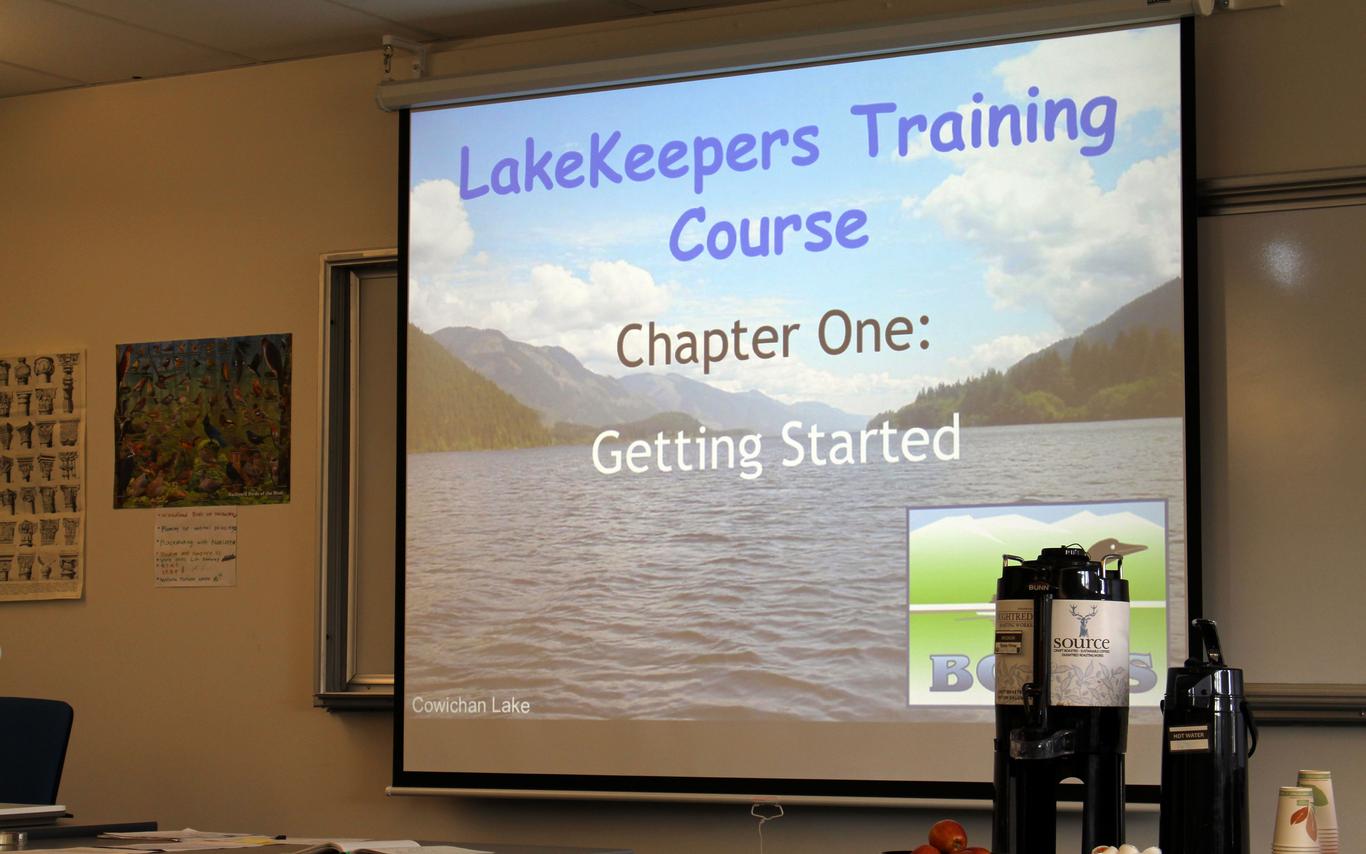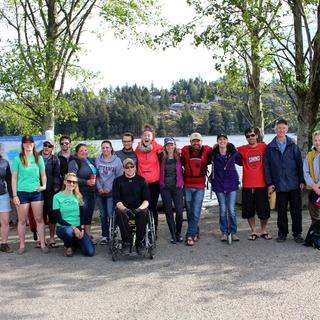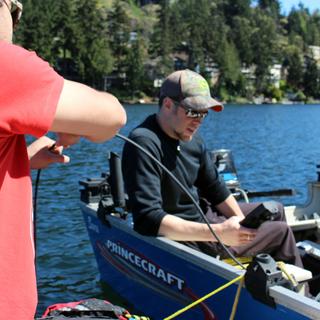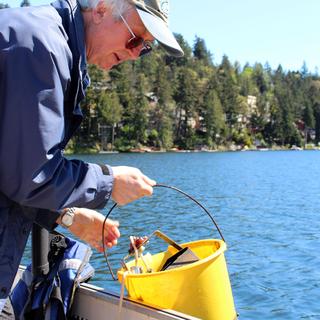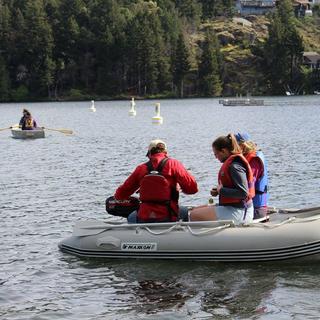The MABRRI team (Graham, Sarah, Ryan, Nelson, Mike, Kayla, and Amanda) recently participated in a BCLSS LakeKeepers Course, which was hosted by MABRRI here on campus. This 2-day course consisted of a variety of topics that covered lake ecology, limnology 101, how to organize a stewardship group, watershed assessment as well as lake monitoring techniques. The instructor, Rick Nordin, was a very knowledgeable LakeKeeper who was able to teach the class the ins and outs of how to take responsibility and get involved with research and restoration of our lakes.
On the first day of the course the MABRRI team as well as other participants learned how to solve problems with lakes and contamination, water quality and limnology. Limnology consisted of typical water fundamentals, specifically, density, temperature, physical characteristics, stratification, mixing patterns, and productivity. Having a basic understanding of water fundamentals (limnology) would give citizen-scientists or the general public a step up in their ability to conduct surveys on lakes and allow them to take responsibility and get involved. A really interesting fact that I took away the first day was that unproductive lakes are very clear, contain no aquatic plants and are oxygen depleted, whereas, productive lakes are not clear, contain more fish, aquatic plants and algae.
The second day of the course the MABRRI team and the participants met the instructor at Long Lake where he taught us the foundations of lake sampling. Specific topics we learned were how to correctly create field notes, rinsing techniques, quality assurance, when to sample, and sample types. Attributes that we were interested in included the amount of dissolved oxygen contained within the lake, temperature, pH, salinity, conductivity, turbidity, and depth. To obtain this information we used different types of equipment such as a secchi disc that helps obtain depth, a van dorn to obtain samples of water below the thermocline (ex-phytoplankton), and a plankton net, which is a conical device made of fine nylon mesh that is pulled through the water to catch zooplankton. This field day was very important because it allowed the MABRRI team to get a grasp on field techniques for monitoring lakes, which will be used to conduct our research for our Lake Monitoring in the Regional District of Nanaimo project.
Adventure Tips
- More information on the LakeKeepers workshop is located on the BC Lake Stewardship society site along with contact information, projects and event information.
- While conducting research within and around lakes, keep an eye out for the Bullfrog, which is an invasive species in BC. These frogs are very large, can be green or brown and have golden eyes. It is important to keep an eye out for these Bullfrogs as they are displacing native frogs from their habitats. How can you help? Contact B.C. Frogwatch
